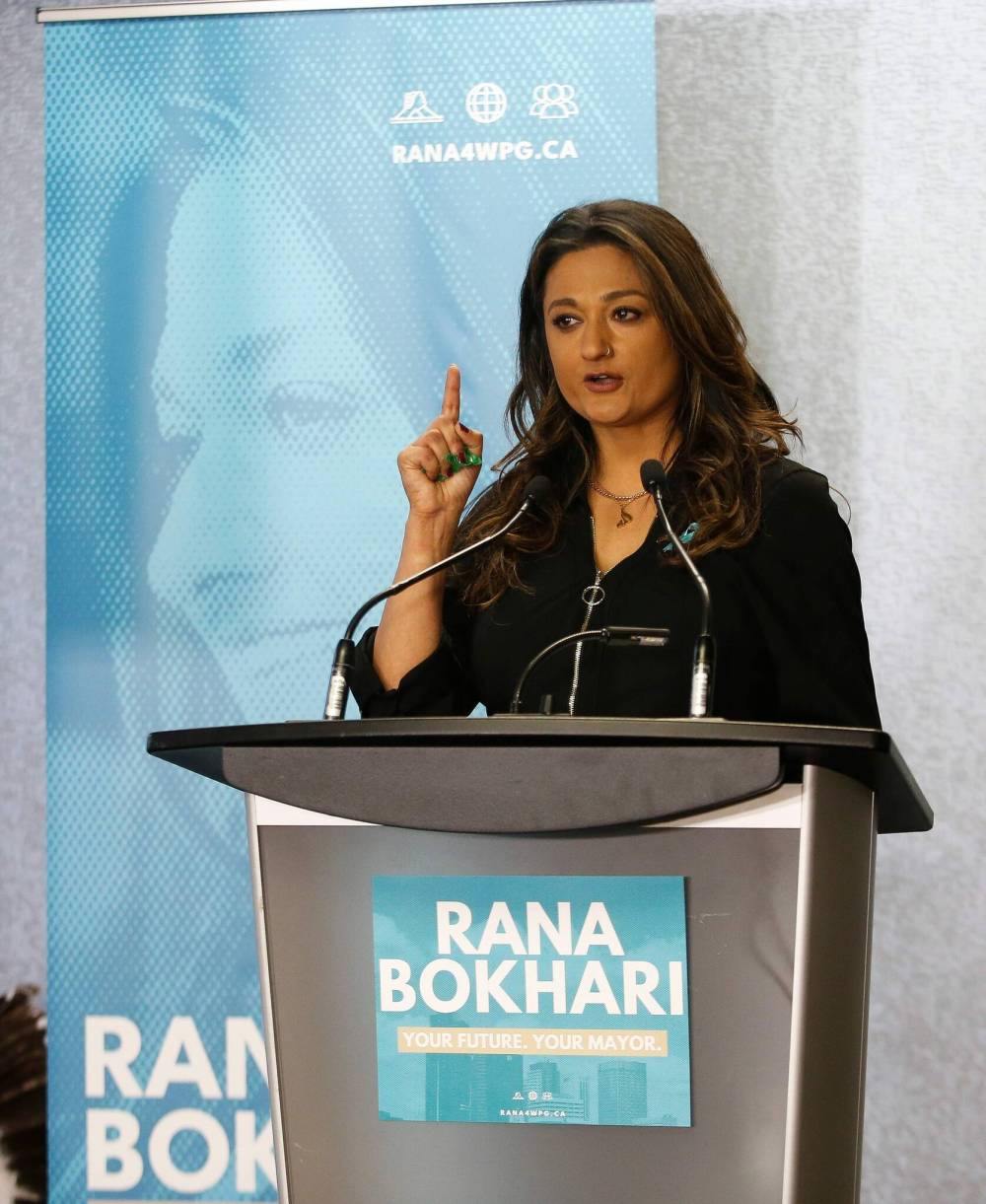Accelerating city sewage projects ‘obligation’ to communities: mayoral candidate Bokhari
Advertisement
Read this article for free:
or
Already have an account? Log in here »
To continue reading, please subscribe:
Monthly Digital Subscription
$1 per week for 24 weeks*
- Enjoy unlimited reading on winnipegfreepress.com
- Read the E-Edition, our digital replica newspaper
- Access News Break, our award-winning app
- Play interactive puzzles
*Billed as $4 plus GST every four weeks. Offer only available to new and qualified returning subscribers. Cancel any time.
Read unlimited articles for free today:
or
Already have an account? Log in here »
Hey there, time traveller!
This article was published 18/07/2022 (960 days ago), so information in it may no longer be current.
The City of Winnipeg needs to speed up two pricey projects to reduce water pollution — and finish one of them more than a decade sooner — according to mayoral candidate Rana Bokhari.
On Monday, Bokhari promised both a strategy to reduce combined sewer overflows and a major upgrade to the north end sewage treatment plant would be completed by 2033, if she’s elected in the October municipal vote.
Such a timeline would have the up-to-$2.3-billion sewer overflow strategy completed 12 years before its 2045 provincial deadline.

“We have an obligation to the people living on and around Lake Winnipeg to not pollute it. There are 30 communities, including First Nations, that live on or near the lake,” said Bokhari.
Combined sewer overflows occur in older lines that collect both precipitation and wastewater in a single pipe. Heavy rain or snow events can cause the passages to overflow into rivers. Such incidents sent 10.6 billion litres of diluted sewage into local rivers last year.
“Last year was one of the driest years on record and yet we still dumped 10.6 billion litres of sewage into the rivers that feed Lake Winnipeg… (That means) bacteria and physical waste make their way through the Red River into Lake Winnipeg,” said Bokhari.
For the north end plant, Bokhari stressed Phase 2 of the three-phase upgrade is urgently needed, since city staff have warned capacity for biosolids treatment could otherwise be exceeded within five to nine years.
“We need to get a handle on our sewage capacity because we are about to run out,” the lawyer and former provincial Liberal party leader said.
The city has applied for funding of the second biosolids phase of the upgrade, though a civic report recently warned its price is expected to soar to $912 million from $552 million. The potential cost hike has not yet been factored into an overall upgrade tab that already reaches $1.854 billion.
On Thursday, council is scheduled to vote on referring the revised price tag to the city’s 2024-27 budget process.
The hike would cover $190 million for inflation/project delays, as well as $130 million more to reduce algae-promoting phosphorous in the plant’s effluent to one milligram per litre or less. That would meet a target that wasn’t expected to occur until a third “nutrient removal” phase of the upgrade, for which council has yet to set a timeline or funding plan.
Bokhari said she would make both major sewage projects a top priority, if elected, and increase city spending to reduce combined sewer overflows to $60 million per year. The municipal government currently spends $30 million per year on that effort, which is slated to increase to $45 million per year 2024-27.
“We have to approach this as an emergency, we have to approach this as a crisis issue,” she said.
An environmental scientist who has long advocated for the city to reduce water pollution as soon as possible welcomed the focus on the issue. However, she stressed removing phosphorous from sewage effluent must remain the top priority.
“If we’re talking about… Lake Winnipeg’s health, the biggest (point source) of phosphorous is the north end treatment plant and that’s where city council needs to focus,” said Alexis Kanu, executive director of the Lake Winnipeg Foundation.
Kanu said reducing the number of combined sewer overflows is important but its funding and timeline must never be prioritized over the north end upgrade.
Its pollution doesn’t just unleash nutrients that fuel the slimy, green algae blooms on the lake, she said. “In the city of Winnipeg, unfortunately, the official line (for the river) is ‘Don’t touch the water, it’s dangerous.’ There are human health, as well as environmental and ecological impacts.”
Winnipeggers will elect their next mayor and council Oct. 26.
joyanne.pursaga@freepress.mb.ca
Twitter: @joyanne_pursaga

Joyanne Pursaga
Reporter
Born and raised in Winnipeg, Joyanne loves to tell the stories of this city, especially when politics is involved. Joyanne became the city hall reporter for the Winnipeg Free Press in early 2020.
Our newsroom depends on a growing audience of readers to power our journalism. If you are not a paid reader, please consider becoming a subscriber.
Our newsroom depends on its audience of readers to power our journalism. Thank you for your support.

